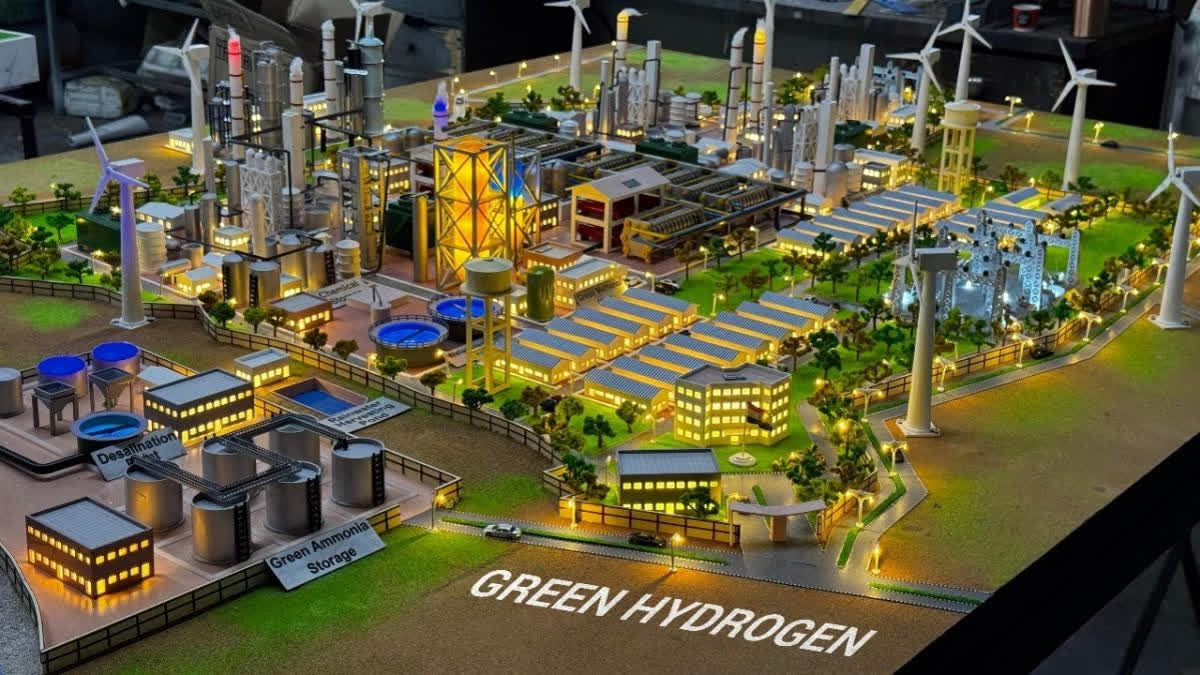By Pradeep Karuturi
The recent announcement by NTPC of its integrated green hydrogen project, with a monumental investment of ₹1.85 lakh crore, marks a defining moment in India's energy transition. Located in Pudimadaka, Andhra Pradesh, this Green Hydrogen Hub will encompass renewable energy generation, manufacturing, and critical infrastructure, placing India firmly on the global map of green hydrogen pioneers. But what makes green hydrogen so significant, and why is this project a milestone for India’s energy security?
Why Green Hydrogen Matters
Green hydrogen, produced through electrolysis powered by renewable energy, is the most sustainable form of hydrogen. Unlike grey or blue hydrogen, which relies on fossil fuels and emits significant carbon dioxide, green hydrogen is virtually emission-free. Its versatility makes it indispensable for decarbonising hard-to-abate sectors like steel, fertilizers, refineries, and transportation. For a nation like India, which is committed to achieving net-zero emissions by 2070, green hydrogen offers a crucial pathway to reduce dependence on fossil fuels and mitigate climate change.
NTPC's Project: A Game Changer
Spread over 1,600 acres, NTPC’s Green Hydrogen Hub is designed to integrate renewable energy projects, electrolysers, green chemical production, and supporting infrastructure like a desalination plant and a transmission corridor. With an annual target of 1,500 tonnes of green hydrogen and 7,500 tonnes of derivatives like green methanol and sustainable aviation fuel, the project exemplifies a comprehensive approach to green hydrogen production. Beyond environmental benefits, the project is set to bring ₹1.85 lakh crore in investments to Andhra Pradesh, creating jobs and fostering economic growth.
The National Green Hydrogen Mission
India’s National Green Hydrogen Mission, launched in 2023, underpins this transformative journey. To produce five million metric tonnes of green hydrogen annually by 2030, the mission aims to attract over Rs 8 lakh crore in investments, create 600,000 jobs, and reduce fossil fuel imports by Rs one lakh crore. A Strategic Interventions for Green Hydrogen Transition (SIGHT) fund has allocated Rs 13,000 crore to stimulate demand and drive down costs, thereby positioning India as a global leader in green hydrogen production.
Challenges On The Horizon
Despite its promise, green hydrogen faces several obstacles. The production cost remains prohibitively high, ranging from $3.5 to $5.5 per kg, compared to $1.9 to $2.4 per kg for grey or blue hydrogen. Electrolyser technology—a critical component — is another cost-intensive barrier, with prices between $500 and $1,800 per kW. Moreover, limited domestic manufacturing capacity for electrolysers and associated components like membranes, compressors, and control units exacerbates dependency on imports.
This could result in large losses for investors and a significant amount of unproductive capital tied up in stranded assets. Investors would then be asking themselves if it does make sense to invest in capital-intensive, complex, risky, and long-term projects if they risk turning into stranded assets before the payback period. This first-mover disadvantage is a significant challenge, highlighting the important need for careful policy planning and risk management in the transition to a low-carbon energy economy. On the other hand, early adopters have a competitive advantage of learning by doing and being able to build subsequent facilities faster, cheaper, and more efficiently.
Financing is another hurdle. While production incentives like the SIGHT fund are a step forward, a comprehensive policy framework addressing financing barriers is crucial. Mechanisms like long-term hydrogen purchase agreements, partial loan guarantees, and targeted subsidies can de-risk investments and encourage private sector participation.
Opportunities For India
India's vast renewable energy potential and skilled workforce position it uniquely to lead the green hydrogen revolution. With abundant solar and wind resources, India can produce cost-competitive green hydrogen through strategic investments and economies of scale. Initiatives like government procurement of green steel and incentivising innovation in hydrogen technologies can further bolster the sector.
Additionally, green hydrogen presents significant export opportunities. Countries seeking to decarbonise their economies could rely on India's production capabilities, creating a lucrative market for green hydrogen and its derivatives. The demand for green steel, ammonia, and sustainable aviation fuel in global markets is already gaining traction, offering India a chance to capture early-mover advantages.
Green Hydrogen and Energy Security
Energy security has long been a strategic imperative for India, which imports over 80% of its fossil fuel needs. Green hydrogen can reduce this dependency by offering a domestic, renewable alternative. Transitioning to hydrogen fuel cell electric vehicles (FCEVs) can also improve urban air quality by eliminating emissions of particulate matter and harmful gases like nitrogen oxides. For sectors like steel and cement, green hydrogen can ensure competitiveness in an era where carbon footprint increasingly dictates market access.
The Road Ahead
For India to achieve its ambitious green hydrogen targets, concerted efforts are needed across multiple fronts. Key priorities include:
- Scaling Renewable Energy: Meeting the green hydrogen production target of five million tonnes by 2030 will require 100-125 GW of additional renewable energy capacity. Accelerating the deployment of solar and wind projects is critical.
- Building Domestic Manufacturing: Establishing local manufacturing facilities for electrolysers and other hydrogen technologies can reduce costs and enhance self-reliance.
- Policy and Regulatory Support: Streamlined approvals, clear land-use policies, and export incentives can attract investments and encourage faster project execution.
- Public-Private Collaboration: Encouraging partnerships between government, industry, and academia can foster innovation and scale production.
- Leveraging R&D: Investments in R&D to develop cost-effective electrolysers and storage solutions can improve the economic viability of green hydrogen.
Conclusion
NTPC's integrated green hydrogen project is more than just a technological milestone; it symbolises India's commitment to a sustainable future. By harnessing the potential of green hydrogen, India can address its energy security challenges, create economic opportunities, and lead the global fight against climate change. As the world shifts towards cleaner energy sources, India’s proactive steps in green hydrogen could well position it as a pioneer in the energy transition, ensuring a greener and more resilient future for generations to come.
